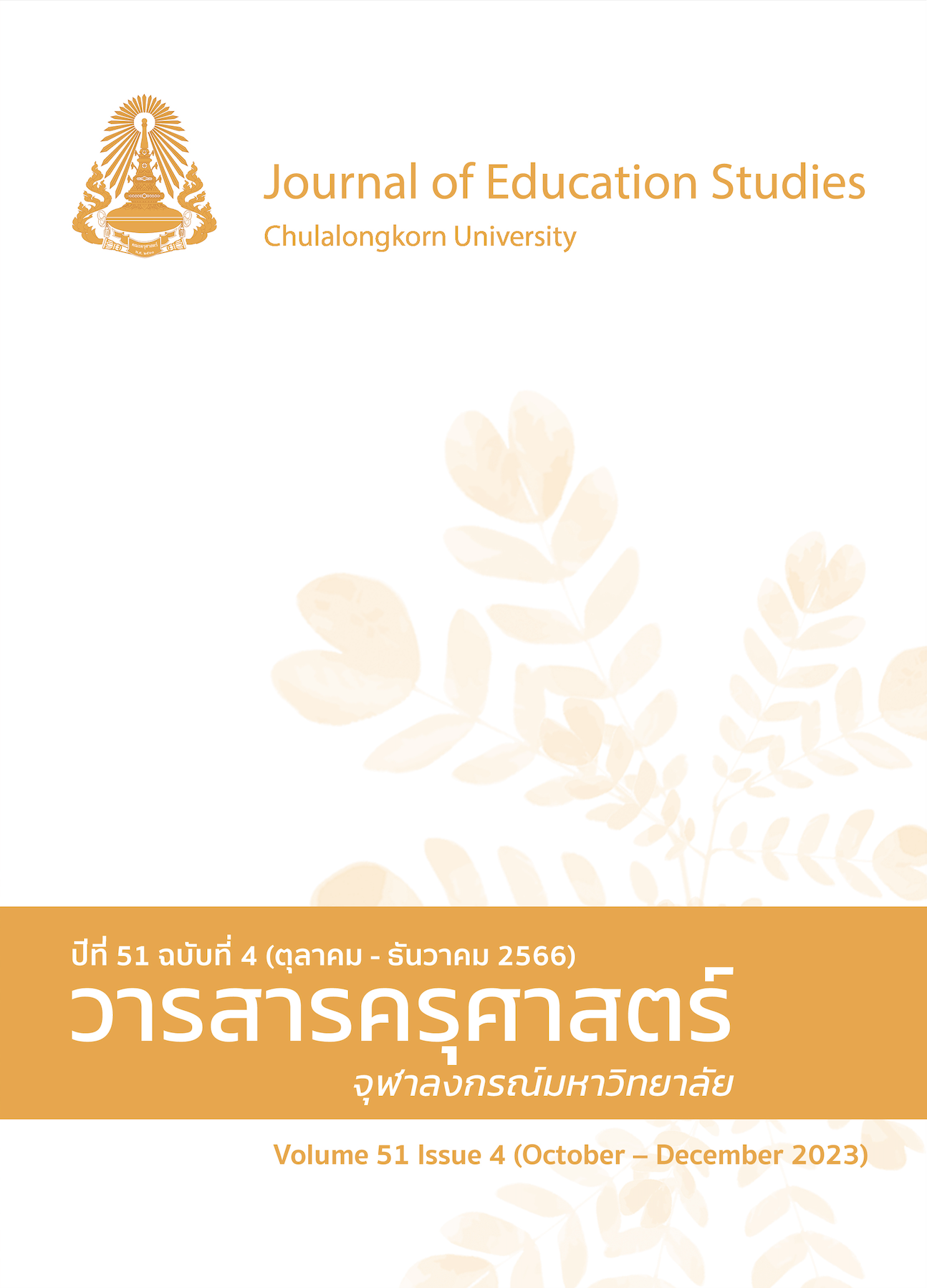Development of an Instructional Process Based on Active Learning and Systemic Thinking to Enhance Innovative Creation Ability of Undergraduate Students
DOI:
https://doi.org/10.14456/educu.2023.40Keywords:
innovative creation ability, active learning, systemic thinkingAbstract
This research aimed to 1) develop active learning instruction and systematic thinking process; 2) compare innovation creativity of undergraduate students before and after experiment; 3) study progress in innovation creativity of undergraduate students in control group. The study was divided into two phrases: a phase for the development of the instructional process and a phase to evaluate the developed instructional process. The sample group consisted of 30 undergraduate Mathematics students in the third year of semester 1 of academic year 2023 bachelor's degree program selected by purposive sampling. The tool used for data collection was an assessment form on creative innovation. The results showed that: 1) The developed instructional process was composed
of 5 steps; presenting the learning scenario, designing self-learning, joining groups for learning exchange, creating works from learning, and evaluating and applying the learning; 2) participating undergraduate students had higher creative innovation ability after the experiment at the .05 level of significance; 3) participating undergraduate students they improved their creative innovative ability better every week.
References
ภาษาไทย
ทิศนา แขมมณี. (2555). ศาสตร์การสอน : องค์ความรู้เพื่อการจัดกระบวนการเรียนรู้ที่มีประสิทธิภาพ:
สำนักพิมพ์แห่งจุฬาลงกรณ์มหาวิทยาลัย. กรุงเทพฯ.
วิชัย วงศ์ใหญ่ และ มารุต พัฒผล. (2562). การพัฒนาทักษะสร้างสรรค์นวัตกรรม. บัณฑิตวิทยาลัย
มหาวิทยาลัยศรีนครินทรวิโรฒ.
สำนักงานวิชาการและมาตรฐานการศึกษา กระทรวงศึกษาธิการ. (2560). แนวการจัดการเรียนรู้ตามหลักสูตรแกนกลางการศึกษาขั้นพื้นฐาน พุทธศักราช 2551: โรงพิมพ์ ชุมนุมสหกรณ์การเกษตรแห่งประเทศไทย. กรุงเทพฯ.
ภาษาอังกฤษ
ASEAN University Network. (2020). Guide to AUN-QA Assessment at Programme Level Version 4.0. Asean University Network Quality Assurance. Chulalongkorn University, Bangkok.
Bonk, C. J., & Graham, C. R. (2004). Handbook of blended learning: global perspectives, local design. San Francisco, CA: Pfeiffer publishing.
Felder, R. M., & Brent, R. (2009). Active Learning: An Introduction. http://www4.ncsu.edu/unity/lockers/users/f/felder/bublic/Papers/ALpaper (ASQ).pdf
Kambiz, E. M. (2004). Links Between Systems Thinking and Complex Dicision Making.
System Dynamics Review, 20(1), 21-48.
Melaville, A., & Blank, M. J. (2015). Community-based learning: Engaging students for
success and citizenship. http://digitalcommons.unomaha.edu/ slcepartnerships/40
Robert, N. (2012). Self-Improvement Guide: How to Adopt Creative Thinking. USA: Lulu press.
Senge, P. M. (2006). The Fifth Discipline Field Book: The Art & Practice of Learning
Organization. London: Random House Business.
Sheffield Hallam University. (2000). Active Teaching and Learning Approaches in Science: Workshop ORIC Bangkok. Photocopied.
Sherman, S. J., & Sherman, B. S. (2004). Science and Science teaching. Westport: Greenwood Press.
Tyler, R. W. (1969). Educational Evaluation: New Roles, New Means. Chicago: University of Chicago Press.
Yan L. (2007). Design Creativity in Product Innovation. International Journal adjustment Manufacturing Technology, 33(1), 213-22
Downloads
Published
How to Cite
Issue
Section
License

This work is licensed under a Creative Commons Attribution-NonCommercial-NoDerivatives 4.0 International License.




